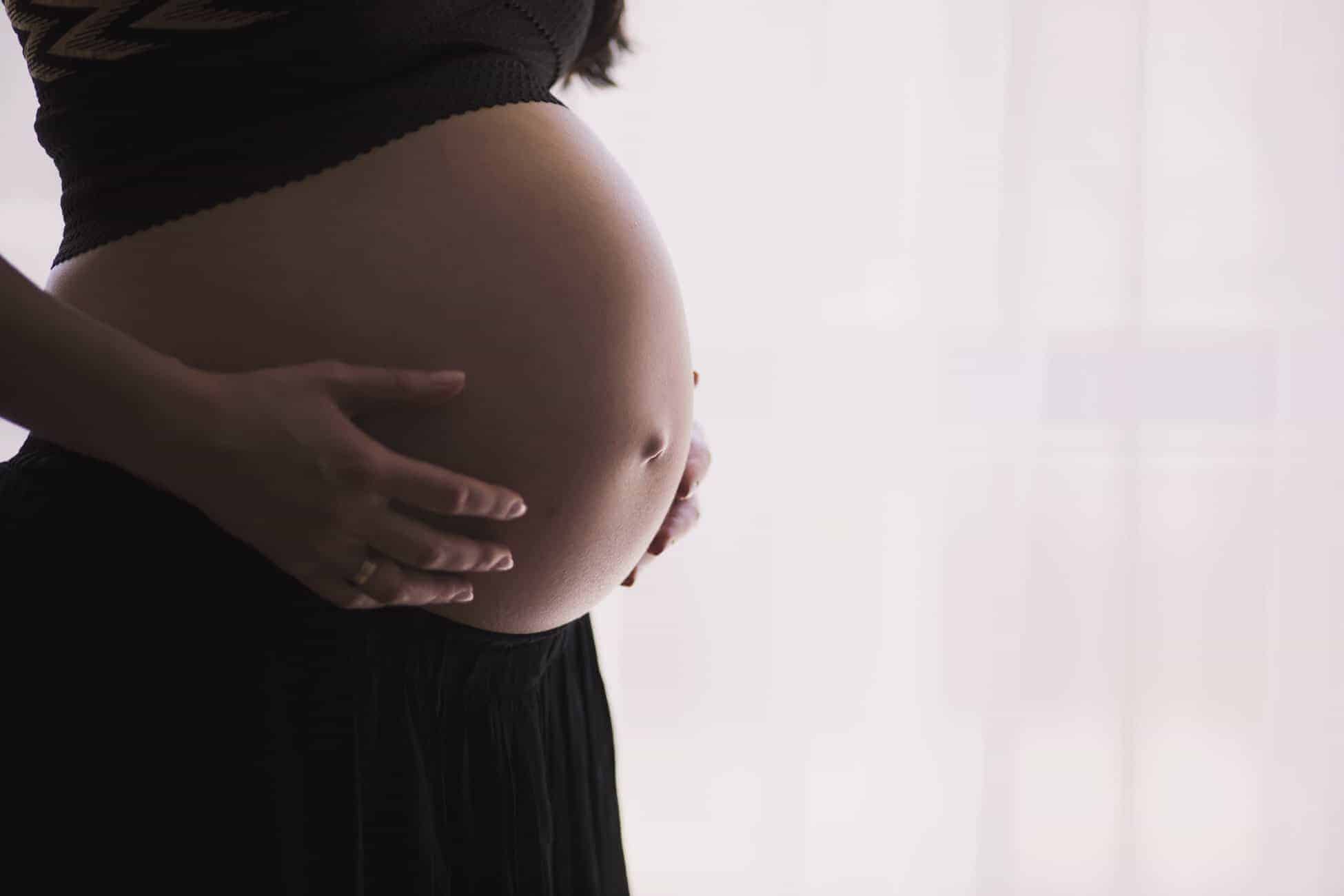As a mom of five, not even one of the birthing classes I attended discussed Precipitous labor
I was lucky that when I went into labor with my 5th Baby was born I was already in the hospital getting prepped for an induction that never happened in the end.
The nurse mentioned Precipitous labor a term I had never even heard of considering this was the fifth baby I had to ask for an explanation.
The labor and delivery of a baby can be a stressful time though it can be even more stressful when labor doesn’t go as expected. For some women, an induction is necessary while with other women, a c-section may be necessary.
For those that experience labor, it is common to deliver a baby within 6-8 hours although it can be longer.

As an Amazon Associate I earn from qualifying purchases. The links below may be affiliate links. Please read my disclosure policy for more information.
Labor and delivery has three stages:
• Active labor (6-8 hours on average)
•Birth of baby (1-2 hours on average)
• Delivery of placenta
Labor typically shortens with each delivery so each birth becomes more rapid.
While most women wish for a quick delivery, there comes a point when labor and delivery can be too fast.
This leads to possible complications and risky deliveries.
What is Precipitous Labor?
The precipitous labor definition is when labor and delivery occur within three hours of the beginning of contractions.
This type of labor can be risky because delivering too fast can cause some delivery complications and even result in delivery in a bathroom or car.
The best way to define precipitous labor is by the medical definition of “expulsion of a fetus within three hours of commencement of regular contractions”.
This means that the labor and delivery are so swift that the fetus is expelled at a rapid rate.
RELATED: Losing your mucus plug? Is Labor Imminent?
The Dangers of Precipitous Labor
Rapid labor can be dangerous in certain circumstances. Precipitous labor complications are:
• Tearing
• Aspiration of amniotic fluid
•Emotional distress of mother
• Birth in unsanitary environments such as a car or the bathroom
• Infection due to unsanitary environment
• Hemorrhaging of the cervix or vagina
• Shock following birth
RELATED:THE BEST ONLINE BIRTHING CLASSES COMPARED
Maternal Trauma
While a fast delivery sounds like it would be ideal, it can actually be quite traumatic. In a precipitous labor, the pain is typically constant and with no break.
The mother can feel like she has lost control or she may go into shock.
This kind of labor can be traumatic for the mother.
The distress of the mother can cause her blood pressure to raise which would cause the baby to become distressed.
While the monitor should show up and down waves of labor, it instead shows one continuous contraction.
This can cause the mother to become distressed and even experience post traumatic stress disorder following the birth.
The traumatized mother may have a difficult time bonding with her baby at first.
She may also fear pregnancy and even avoid pregnancy due to the left over fear and shock of a precipitous labor.
RELATED: How to overcome the fear of Labor

The Risk Of Precipitous Labor
While it can be impossible to predict rapid labor, there are some factors that can increase your risk of a precipitous labor.
Precipitous labor and delivery is most common in women who have:
• A strong uterus that contracts with strength
• A birth canal that is particularly efficient
• A history of previous rapid labors
• Low birth weight or otherwise small baby
• Teenage mother
Precipitous labor and delivery are most common in women who have a history of rapid labor, as labor and delivery typically shorten in length with each pregnancy.
The more deliveries a mother has, the faster her labor goes.
RELATED: The truth about pain relief in labor: My honest account
Signs Of Precipitous Labor
Every case will vary but these are some of the signs of rapid labor:
• Intense and sudden contractions with little to no time to recover
• Pain that feels like one continuous contraction with no break
• A sudden urge to push or bear down, even before the cervix is fully dilated
RELATED: 21 Things I wish I’d known about Birth.
Precipitous Labor Causes
While we are aware of some of the risk factors of precipitous labor, the cause is largely unknown.
The limited data of rapid birth makes it nearly impossible to keep track of the causes involved with precipitous labor.
There is simply not enough recorded data to determine the cause of precipitous labor.
RELATED: How to recover quickly after a vaginal delivery.

Precipitous Labor Nursing Interventions
The rapid nature of precipitous labor makes medical interventions difficult.
Unfortunately, not very much can be done to control the pain. Often, the mother experiencing rapid labor will deliver at home or in the car.
There is simply no time to administer medication.
Nurses may offer comfort items like ice chips or extra pillows.
Unfortunately, there’s not very much that can be done.
The force of the rapid delivery is extreme and besides comfort items and calming techniques, there is no medical intervention that can slow the precipitous labor.
RELATED: Contractions Vs Braxton Hicks. How to tell the difference.
What To Do If You Experience Rapid Labor
Most expectant mothers slowly build-up to starting labor.
A first time mother could experience labor on and off days before she gives birth. This process of the usual slow build up allows the mother to adjust and prepare herself.
However, in precipitous labor, the mother may not experience any symptoms of labor starting slowly.
Instead, rapid labor may begin with no warning or possibility of slowly adjusting to the pain.
If you experience precipitous labor, there are some things you should do if you experience precipitous labor:
• Call for help immediately
• Use breathing and calming techniques
• Stay in a clean environment until help arrives
• Lie down on your back or your side
RELATED: How to heal quickly postpartum. Using a Padsicle

How To Cope With Precipitous Labor
Precipitous labor can be incredibly traumatic. The mother may feel out of control which could cause high blood pressure and medical distress.
While there is not a medical intervention for precipitous labor, there are some calming techniques that can be used to cope with precipitous labor.
These techniques are:
• Slow and deep breathing
• Meditation
• Counting
• Keep in mind that it is only temporary
How To Prepare for Precipitous Labor
There are some things you can do to prepare yourself for the possibility of precipitous labor.
One example of this is ensuring that your partner and you are aware of what to do if there is a sudden delivery at home. These steps include:
• Find a comfortable place to lay down such as a bed
• Know that the process is natural
• Place the new baby skin-to-skin on your chest and cover with a blanket
• Use a towel to wipe away any amniotic fluid that may be in his nose or mouth
• Run your fingers from the corners of his eyes to his nose tip to stimulate the draining of mucus or amniotic fluid
• If the baby does not appear to be breathing, blow short puffs of air into their mouth
• Do not cut or tie the umbilical cord
Here are some other tips to prepare for the possibility of precipitous labor:
• Calculate the time it will take you to get to the hospital. If it is more than 30 minutes, you may want to leave a little sooner to allow yourself time.
• Pack your hospital bag and include any phone numbers you need as well as your health insurance information
• Attend labor and delivery classes that can teach you techniques to cope with a precipitous labor

When To Go To The Hospital
It is possible to experience contractions days before active labor.
There are several symptoms that typically occur at the beginning of labor. These include:
• “Bloody show” or blood and mucus on toilet paper
• Cramping
• Feeling as if the baby has dropped
• Tightening of the stomach that comes and goes
• Soft bowel movements
• Restlessness
• Backache
• Nesting
These symptoms are signs that labor is going to begin.
These symptoms typically occur at home, sometimes days before active labor.
It is not necessary to go to the hospital until active labor has begun. So when should you head to the hospital?
RELATED: How to heal quickly postpartum. Using a Padsicle
How to slow down Precipitous Labor
Well, it is recommended that you use the “411 method”.
This rule of thumb is that if you are experiencing contractions less than 4 minutes apart, lasting at least 1 minute, for 1 hour, it is time to head to the hospital.
To time your contractions, start counting from the beginning of one contraction to the beginning of the next.
Use a stopwatch if possible as this will ensure accuracy. Write down how long between each contraction as well as the duration.

Precipitous Labor Statistics
There is very little information about the statistics of a precipitous labor.
The National Vital Statistics Report of 2009 states that “while exact statistics as to the percentage of women who experience precipitous labor is not known, it is estimated at approximately 2 percent of all births.”
According to the report, of 4.3 million live births, 89,047 were precipitous labor or approximately 2%.
This number is low however there are several factors that may impact the statistics of a precipitous labor.
For example, birth records are kept on the state level.
The process of recording the birth varies state to state and it is thought that precipitous labor largely goes unreported.
This means that while there may be more cases of precipitous labor than thought, they often go unreported.
Another factor that may impact the statistics of precipitous labor is that the only data recorded is from the United States.
There is no data collected from other cultures who use different techniques in labor and delivery than western culture.
So the statistics may vary drastically depending on culture and region however the statistics of worldwide precipitous labor are largely unknown.
REFERENCES
https://www.ncbi.nlm.nih.gov/pmc/articles/PMC4285060/
https://americanpregnancy.org/labor-and-birth/rapid-labor/






